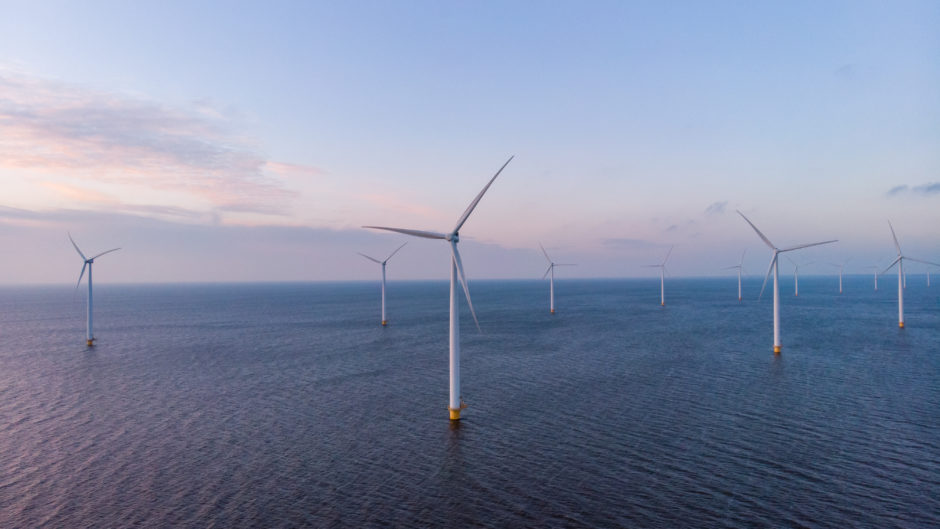
Scientists at Aberdeen University are exploring the cost, both financial and environmental, of decommissioning wind farms as part of efforts to develop a ‘playbook’ for the industry.
Over the coming decades, the European Union is aiming to enhance its offshore wind capacity from 18.52 gigawatts (GW) in 2018 to 460 GW in 2050.
However, with the expected design life of an offshore wind farm estimated to be between 20 and 25 years, it’s only a matter of time before the industry will have to face up to the huge challenge of decommissioning hundreds of turbines.
Funded by the EU, the Europe-wide DecomTools project brings together partners from industry, academia, port authorities and others to discover solutions that will help limit the environmental and cost impact of retiring wind infrastructure in the North Sea.
Scheduled to end in 2023, the venture comprises seven separate work packages led by various institutions.
They include market analysis, logistics, recycling, and, in the case of Aberdeen University’s School of Engineering, process optimisation.
Using data and artificial intelligence techniques, researchers are assessing the technical, operational and environmental requirements for dismantling offshore wind farms, as they develop a Decommissioning Decision Support System (DecomDSS).
It’s claimed the initiative could save operators millions, while also mitigating the environmental impact of decommissioning campaigns.
Aberdeen University’s Dr Alireza Maheri, who is leading the development of DecomDSS, said: “Just one of the factors included in the DecomDSS is factoring in the uncertainties in the weather. In terms of decommissioning windfarms, there are limitations that are created through wind speed and wave height.
“If wind speed is about 12 metres per second, then no decommissioning can be done because of the aerodynamic forces on the blades which make the operation unsafe.
“When it comes to planning for uncertainties in the weather operators will normally add between 20-50% on top of what they estimate it will cost to remove the wind turbines, because of the uncertainty.
“But now we are working on a way to include the uncertainty and give an indication of how much longer it may take you to deal with these uncertainties. We ran a case study for a sample wind farm, which showed that if we optimised the start date for a project we could save up to £6m for operators in renting equipment.”
At present, the conventional approach to wind farm decommissioning is to simply reverse the installation process.
But, Dr Maheri said his research has found that is not necessarily the best method, either in terms of cost or environmental impact.
He explained: “When a windfarm is installed, all the parts go from the nearest port to the site. For recycling, the operator moves them all back to the same port and then to different recycling centres.
“But what if the parts were sent straight from the offshore site to different recycling points? For example, might it be better to take the blades into port and cut them there before transporting by road to the nearest recycling centre, or take them directly to another country where they have more efficient recycling centres in terms of energy consumption, or have reutilisation or repurposing facilities? These are all questions that we are asking ourselves as part of our work.”
Due to the changing nature of the industry, Dr Maheri admitted there are “conflicting objectives” which mean there “may never be an optimum solution”.
However, he added that the DecomDSS will provide “different solutions” that operators can use in order to find the best way forward.
The project is also considering what might happen should operators wish to leave parts of the installation in the sea, as has been mooted in oil and gas.
Dr Maheri eadded: “What isn’t really being considered currently is what if operators wish to cut the topside of a substation off but leave the foundation and re-use it for something else, for example a site for hydrogen production?
“Because this isn’t a common practice, there are a lot of uncertainties unless you undertake a proper cost modelling that asks questions about important issues, for example to what extent the foundation has degraded and so on. So we are also considering scenarios that include reutilisation for other green energy projects.”
Tavis Potts, Head of the University’s Centre for Energy Transition (CET), added: “Our School of Engineering’s involvement in a key part of this major project is a great example of the breadth of world-leading research taking place across the University across multiple disciplines related to the energy transition.
“We have strong culture of research centres across our schools, working on topics such as renewable technologies, energy storage, energy geosciences, energy systems modelling, hydrogen, data and AI, energy markets, decommissioning, energy law and economics and climate impacts and governance.
“The CET’s aim is to work with industry, authorities and governments in order to help meet our collective climate goals, decarbonise our economies and develop green growth strategies. Dr Maheri’s research , which is the most detailed of its type in the world, is a great example of how we are using our academic expertise to tackle complex problems and develop real solutions that will help meet these goals.”
Recommended for you

